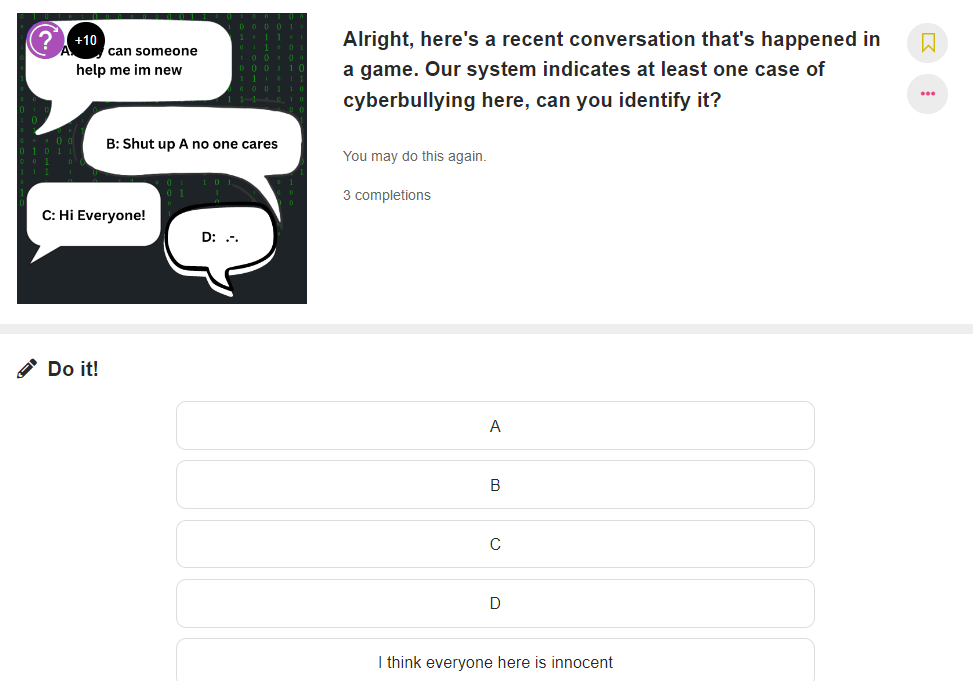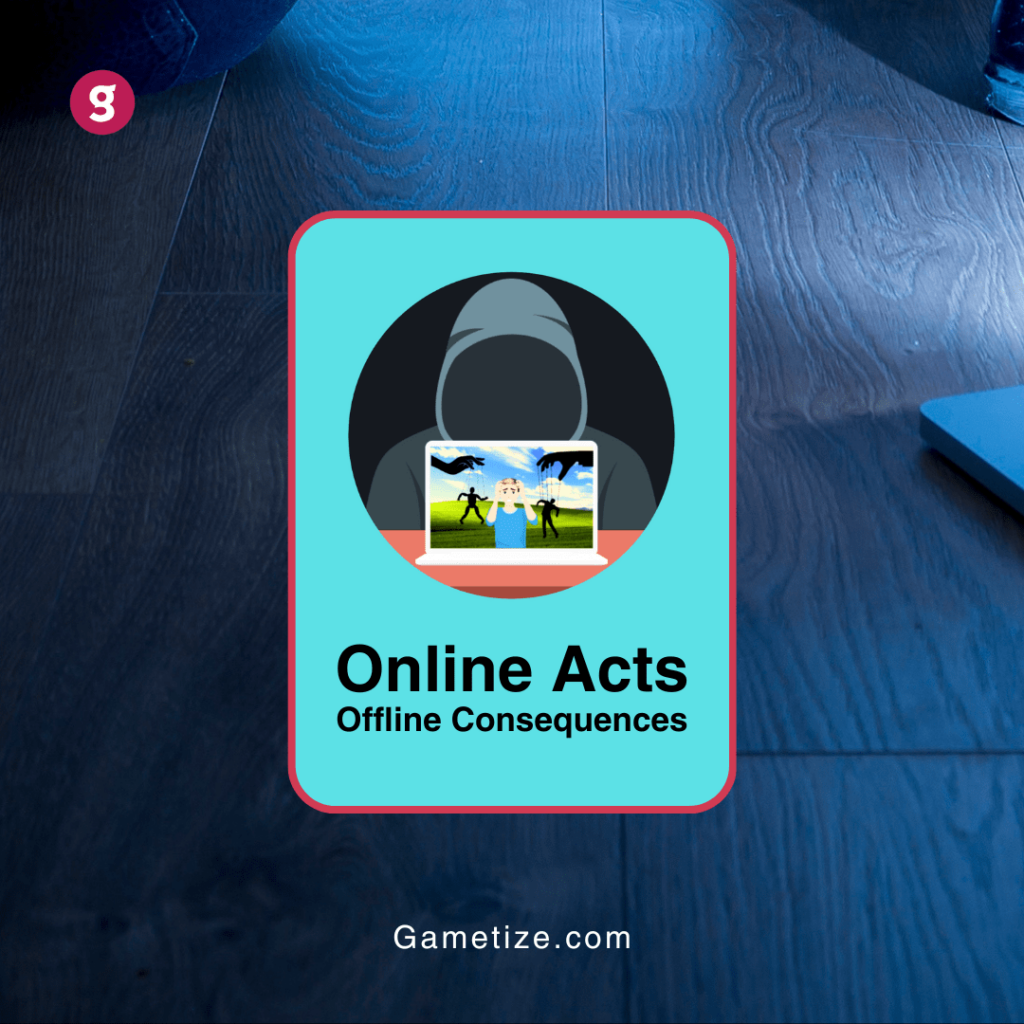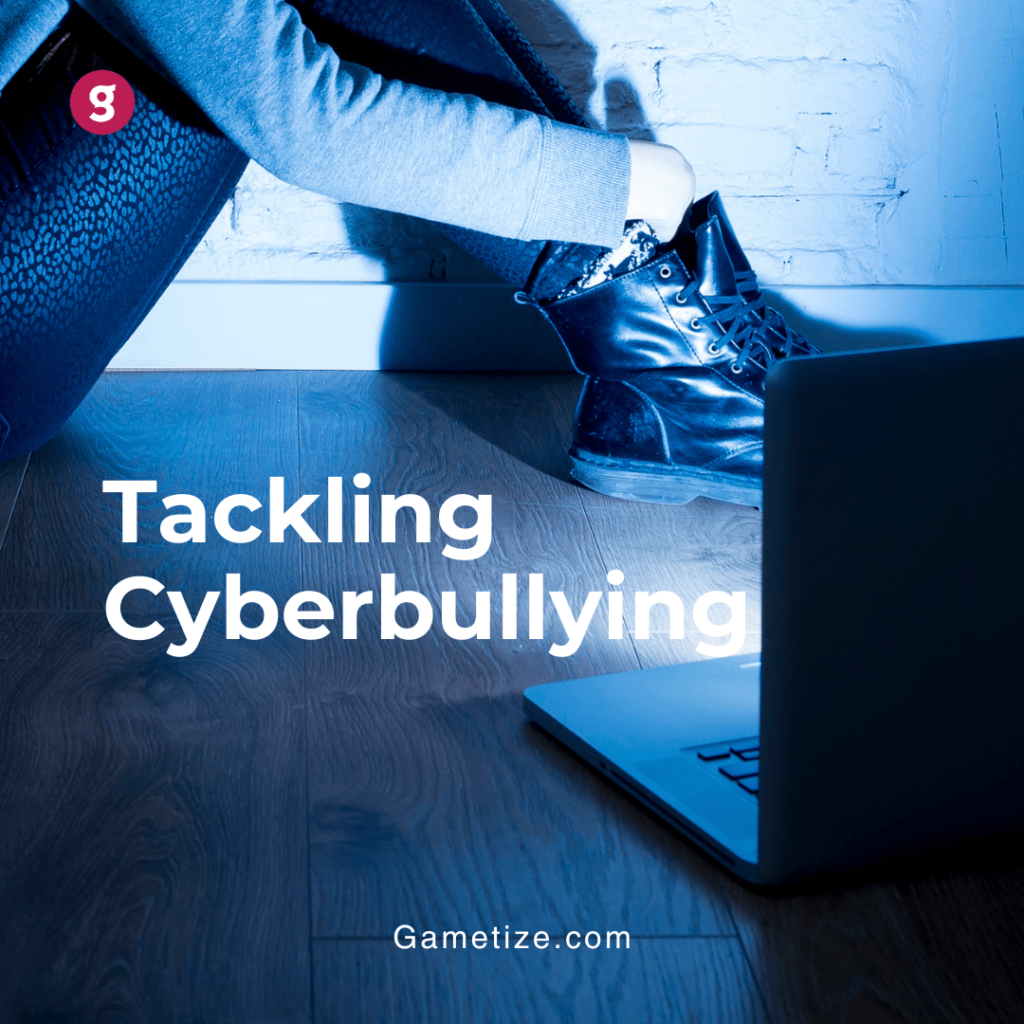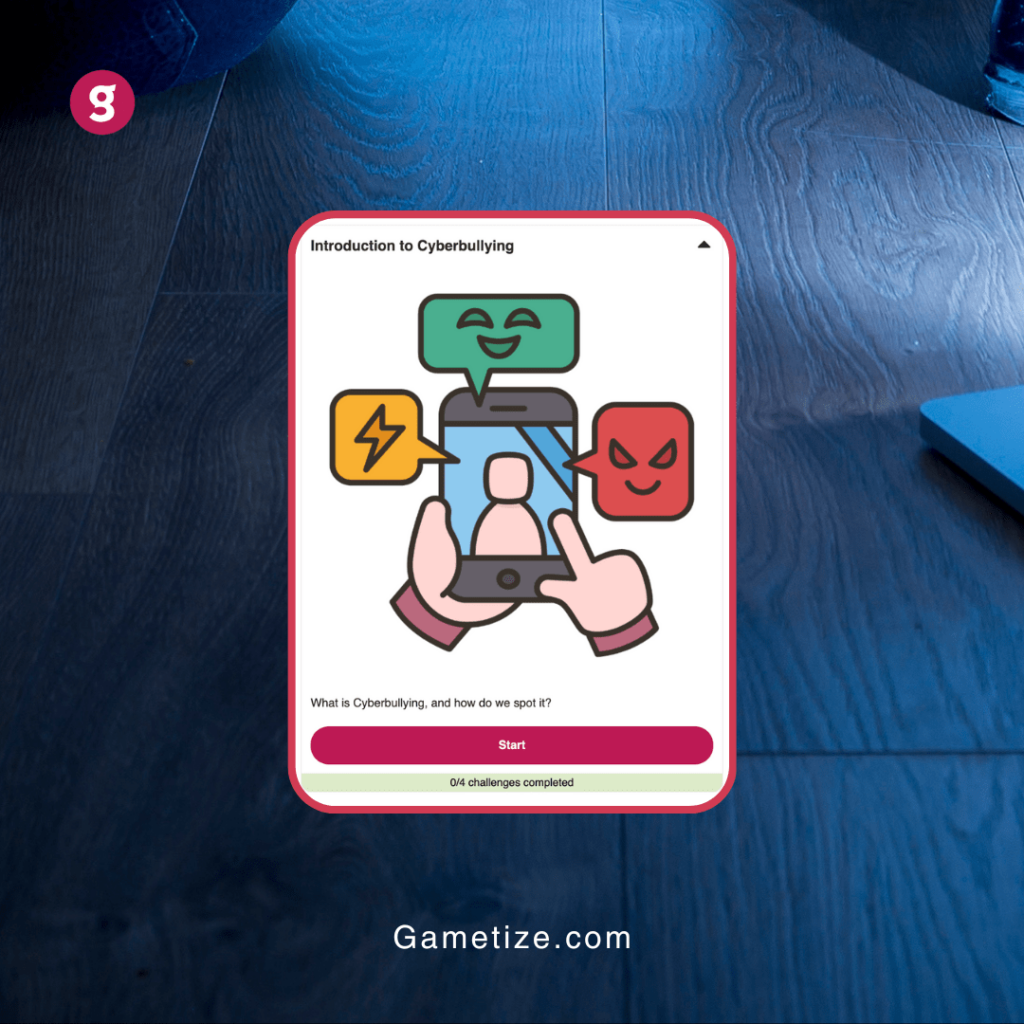[GUEST POST] Byte Back: Tackling Cyberbullying Head-On

Introduction
With the rise of technology and the internet in the past few decades, cases of bullying have shifted from being in the real world into the digital one. Unfortunately, cyberbullying is not often discussed or talked about, and often people may suffer from or observe others being cyberbullied without knowing what they can do to help the situation, resulting in many cases going unresolved and ignored. The negative and real effects of cyberbullying, such as stress, depression, or strained offline relations, are often overlooked and not known enough by the online community. This in combination with the lack of understanding of what to do results in victims suffering from the negative impacts of cyberbullying without receiving the help they need. My game encourages people to learn more about cyberbullying, what is considered cyberbullying, what they can do, and how they can respond.
Target Audience
The target of this game is mainly the younger generation, which constitutes teenagers to early adults who are online most of the time, yet may not be mature enough or aware about the cyberbullying situation online to know the best course of action to take when occurring cyberbullying cases.
Goal of The Game
The game aims to educate players on what constitutes cyberbullying, and how they may react to cyberbullying whether they are a victim, a bystander, or even as a perpetuator of cyberbullying themselves. This will hopefully lead to a change in behaviour online which will lead to a better and more comforting place for users online. This change in behaviour includes players standing up for victims of cyberbullying by knowing where to report cyberbullying and how to help victims cope, as well as victims standing up for themselves by telling a trusted adult or reporting the incident to moderators, while cyberbullies reflect on their actions and find the help they need or stop cyberbullying by themselves.
Flow of The Game
The game consists of a narrative in which you, the player, is a new officer in an alternate universe where cyberbullying is considered a crime and is arrestable. As an officer, you get different tasks revolving around cyberbullying and a police officer every day.
The game starts out with an introduction, which serves as a mini tutorial, showing the players what cyberbullying is by defining it and giving a quiz to determine if the player has gained the ability to identify cyberbullying online. This is to ensure that all players are on the same page when starting the game, so that they do not get confused in later stages of the game where knowing what is cyberbullying may come as an assumption.

The next part of my game consists of five different chapters, each representing a different day of a work week, hence five days representing the five weekdays. The first day starts off relatively easy, with small quizzes to identify cyberbullying online, before interacting with victims of cyberbullying to learn what cyberbullying can do to them. The first day ends here, being a relatively minor case of cyberbullying with minimal but negative impact.

The second day of the game focuses on a police interrogation of a victim of cyberbullying, which shows how serious the impacts of cyberbullying can get. This aims to show no matter how harmless a simple online conversation may seem, its real offline impacts can be significant. After extracting some information from him, you are told to make a poster on cyberbullying, in which the player goes on a step by step process of creating a poster, learning about how cyberbullying victims may react or respond to being cyberbullied.
The third day of the game goes into full undercover mode, as the player is now told to go undercover and infiltrate a gaming house to uncover the mastermind behind the recent cyberbully case. This day starts off as a detective style game, making players read clues carefully to identify who is the cyberbully. This then ends with the player interrogating the culprit, in which we learn that not all cyberbullies commit cyberbullying knowing its true impacts. Due to the nature of the online world, we often do not see the offline consequences of our actions, leading to many cyberbullies unknowingly causing others harm simply from ‘having fun’.
The fourth day of the game revolves around the player being made to do a demonstration at a local school, to raise awareness. This “day” mainly revolves around checking the player’s knowledge thus far in a fun manner. The true test arrives on the fifth day, in which the player is given an examination to test what he/she has really learnt thus for in great detail, comprising of ten questions related to what the player has gone through so far. The questions range in variety, from what to do as a victim of cyberbullying, to friends of victims, to even the perpetuator’s friends. This is the section in which the player is truly tested on whether the game has made an impact in educating them on cyberbullying.
Gamification
Overall, the game’s way of classifying different parts of cyberbullying into different “days” allows the player to feel as though they are immersed in a campaign style narrative, which incentivises them to follow through with the game like a quest, driving them through curiosity. There are also achievements given for each day of the game being complete, giving the players a real tangible item to show for their effort in playing the game, serving as further motivation. The game has many sections where despite the story line being linear, information is given by having players press a button to receive it in pieces, for example a poster on cyberbullying is “made” by players piece by piece, instead of being directly presented to the player. This allows the players to experience as though they have an impact directly on the game, which not only results in more attention towards the information being given, but also allows players to feel a personal connection towards the game, all serving as motivation for them to keep playing.
Personal Experience
The initial part of creating this game, which mainly involved planning out what I wanted to include as well as deciding on how to present the information, was the hardest part of the process. With the large amount of information I needed to provide the player, it was tough finding ways to present them all in an interesting and fun way. However, the day system I decided on helped with this, as it set a theme for each topic of the game to allow me to organise the information into different “days”. As I wanted the player to feel more immersed in the game, I used other online sites to create images of online chat logs, using the image embed feature on the Gametize website to display them, making the experience feel more genuine compared to blocks of text. I also eventually decided on adding sections where users could press buttons which acted as a form of dialogue option, to make the game feel more personalised to each user, which allowed me to make the game more interesting and interactive. Overall, it was a tedious yet fun experience for me creating this game.
Conclusion
While I had my ups and downs in the creation of the game, this experience has led me to a deeper understanding of gamification, letting me realise that gamification as a concept has many different ways of materialising in the real world, showing me that gamification can happen in many different ways, whether it be creating an immersive narrative or giving rewards and achievements. This also helped me learn more about the topic of cyberbullying, as I had not known certain facts about cyberbullying before I had researched more on the topic for this game, which led me to a greater understanding towards the online world.
Are you able to identify what is cyberbullying? Find out here: https://gametize.com/project/cyberbullying



